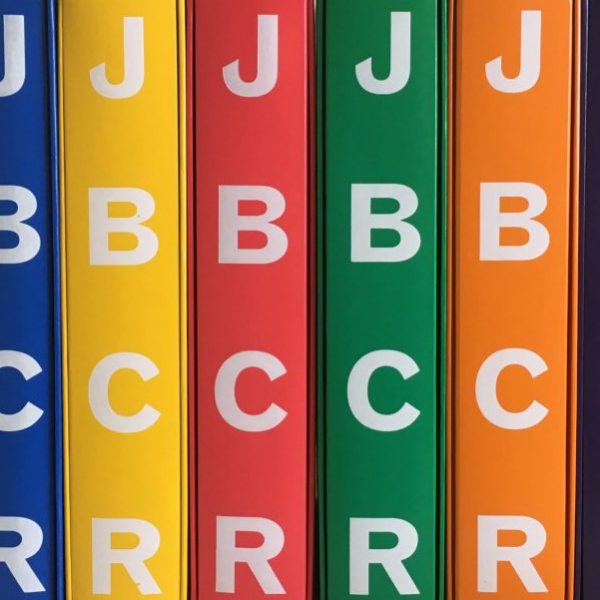All media is affective media. Inspired by the work of John Baldessari
The recently-released John Baldessari Catalogue Raisonné: Volume Two documents the artist’s work and development of technique in the decade following his infamous “Cremation Project,” encompassing Baldessari’s continued photo-based works in the 70s to, in the 80s, the first of what became an iconic Baldessari image: overlaying the faces of individuals in black and white photos with colored discs.
Baldessari continues to blur the line between conceptual and pop art. Earlier this year he collaborated with Garage Magazine to create a dual cover for their U.S. edition. In the original photo, the model Adriana Lima poses in a modern cowgirl outfit; in the Baldessari version, Lima’s clothes, left arm, and nose remain untouched. Everything else has been replaced by a different color fields in the outline of the original part of the photo.
Looking at the Garage cover is to look at a clear evolution from the Baldessari’s facial discs to his very recent work. The first example of one of Baldessari’s facial discs was made in 1984, in a photo called “Two Relationships Early (Warm)/Late (Cool) with One Risky.” In it, two images stand vertically juxtaposed, a woman startled and frightened by a bear, and a young child, face replaced with a yellow dot, clutching a stuffed bear close. What does this unsettling image mean? The title provides information on time, temperature, and relative risk, but confuses the most important question raised by the abutting images: relationship.
Another major project from this era is his “Blasted Allegory” series in 1978, which includes a series of still images from popular culture, with a word scribbled in color over them, arranged to suggest some narrative construction. As an exploration of film, photography, word, and narrative they are striking pieces, and as a historical piece of the Baldessari art project, which culminates right now in a coloring-book version of Adrianna Lima. The project begins with photograph and color or word overlaid but separate, but the development is to collapse them into a single image, or, more accurately, to see if those collapses can be accomplished while still creating a recognizable image.
An example may help illustrate some of the possible theories that underlie Baldessari’s exercise, which are admirably explored, especially in relation to the “Blasted Allegory” series in the Catalogue’s opening essay. The Catalogue contains a watershed work from 1976 called “Concerning Diachronic/Synchronic Time: Above, On, Under (With Mermaid).” In it, six images are arranged in two columns, to form three rows of two: in the first row, a photo of a jet then a photo of a bird: in the second row two photos of a speedboat taken two seconds part: in the third row, submarine divers then a mermaid. What does this work have to do with time? Time passes in the middle frame, while the top and bottom frames seem to present alternate realities. Even if time is the actual subject of the images, they have countless narrative and thematic relations to one another, overloaded to the point where their combination almost defies meaning, rather than creating it. What this does is reveal a simple truth, to the viewer and perhaps, as a watershed work, to Baldessari: all media is affective media; all media is read.
Back to Adrianna Lima, in her cowgirl outfit and her Baldessari outfit. The first image is a typical example of affective media employing the long held maxim that “sex sells.” An attractive woman on the cover arouses the desire of consumers, and magazines fly off the shelves. Then it abuts this other image, and Baldessari’s image, self-contained in a way, presents different parts that abut themselves. All the parts of sexual attraction are there but Baldessari’s artwork subverts that sexual affective meaning. Is it an exploration of the human form, of how many parts he can take out before the photo is no longer a “person?” Or is Baldessari just trying to highlight the clothes? Affective media generates an overwhelming amount of belief in our culture since the dawn of mass media. Baldessari stands out as one of the champions of affective subversion even when, decades into his storied career as an internationally-acclaimed and genre-defying artist, he collaborates with magazines and the images of culture.
Jack O’Malley is a freshman at Yale and a student intern at Yale University Press


























